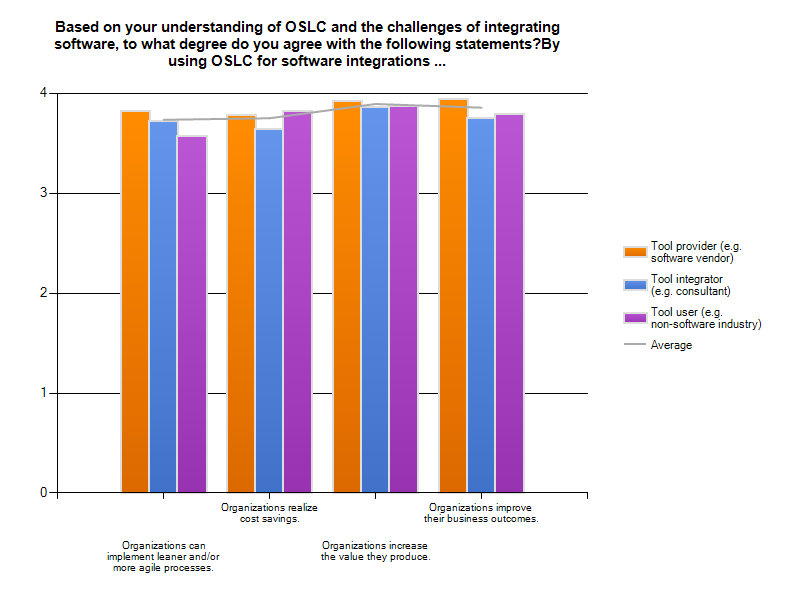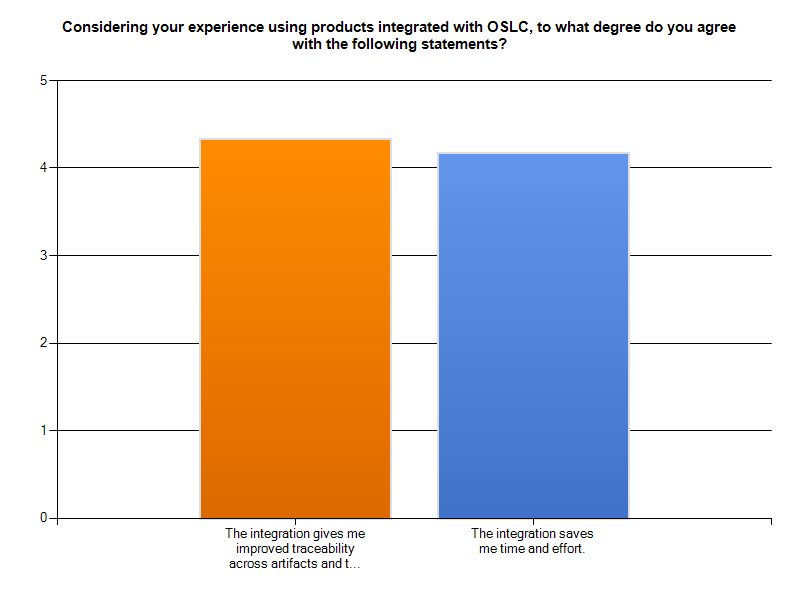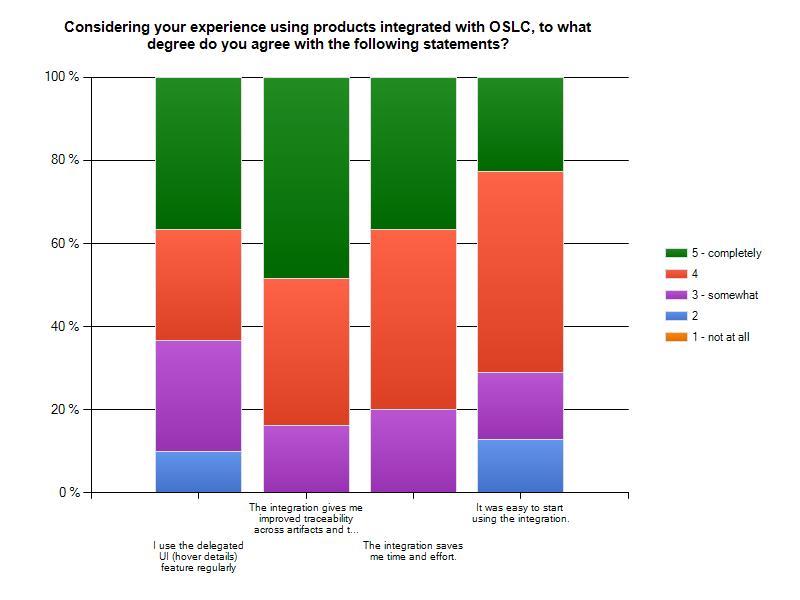In response to yesterday’s post about the value users and implementers can get from OSLC today, some people have asked me about any results from the survey that support the thesis.
(The raw survey results are available here; a summary PDF is also available.)
Question 4 in the survey was explicitly about the “integration problem” and how OSLC is helping to solve it:

Overall, 60+% of respondents felt that OSLC has been more than “somewhat“ helpful for organizations to:
- Implement leaner and/or more agile processes,
- Realize cost savings,
- Increase the value they produce, and
- Improve their business outcomes.
(85-90% of respondents felt OSLC had at least contributed “somewhat” to improvements in those areas.)
We can also take a look at this data based on whether the respondent works for an organization that is primarily a tool provider, integrator, or user:
Here we see that tool providers claim the biggest benefit from OSLC, with integrators and users finding different benefits, but across the whole being about the same.
We also asked users to assess the value they have captured using OSLC-based integrations (this was an optional question and wasn’t restricted to those who work at companies that are primarily tool users):

The responses were quite positive here (over a 4 (out of 5) average for both questions). (The complete first question is: “The integration gives me improved traceability across artifacts and through my process.”)
Not a single respondent rated the OSLC-based integration lower than “3 – somewhat”:

(The above chart also shows the other questions asked in this section.)
The survey results look to support the thesis that there is a lot of value in the vision of OSLC, and it is possible to realize some of it today. That is, people are benefiting from OSLC today, and have room to benefit from it more in the future.
Let’s close off with some selected quotes from survey respondents:
- Having used products integrated by OSLC (the Jazz CLM suite) I would never choose to go back to previous tools. With the integration, it feels like I'm using a single product instead of multiple integrated products.
- We need consistency across different implementations.
- Linking is only half of my problem. I want to be aware of the life cycle changes to the things I have linked to. Our tools provide a way to experience notifications and I would like to aggregate these life cycle notifications in the same spot.
- Still tricky in a compliance scenario to make sure the link is pointing not only to the right object but also the right version of an object. Unsure how to quickly find and fix dangling references or suspect links.
- In general, it is the best tool integration architecture I've ever seen. We need to improve some things: 1. vastly increase adoption by lowering the bar for implementation: e.g. a "OSLC-enabler" code generator to wrap existing services and expose the data model as resources 2. support more automation/"process" - e.g. how to implement "suspect link" notification/flagging on a testcase after requirements change? currently, links are quite "dumb" 3. make a more user-friendly and nice web-site - the current wiki is too hard to digest!
- The rate of positive change is great, the quality improvements at each step are great, the community is great. Now if only all open source tool providers would pick up on OSLC... Apparently some tools can do without an architecture but I say no tool can do without OSLC.
- The open community aspect is key. The technology basis on Linked Data is essential. The combination is extremely valuable, I would like to see these essential core values remain and reinforced as the community grows.
- There is a lot of promise to OSLC, some has been realized, I look forward to when more is.
Remember, full survey details and summary are available for you to take a closer look. If you do take a closer look, it would be great if you share your findings/interpretations with the whole community.